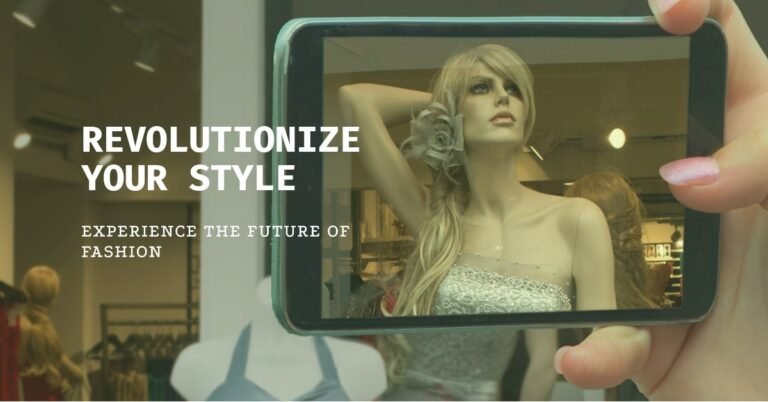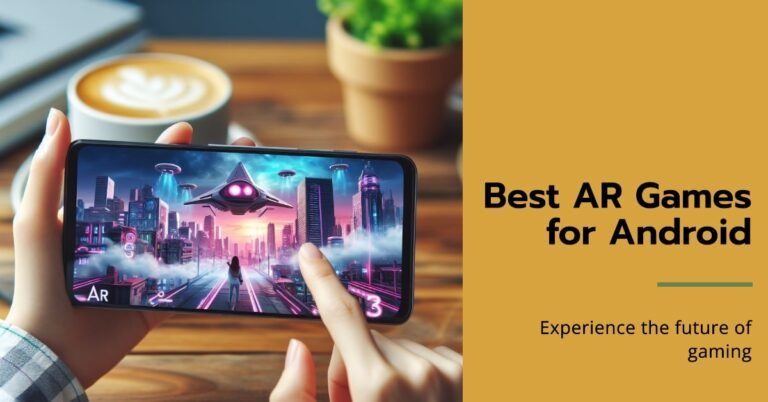Where is AR currently being used the most?
Augmented reality (AR) is a technology that superimposes a computer-generated image on a user’s view of the real world, thus providing a composite view. AR has the potential to revolutionize many industries, and it is already being used in a variety of applications. In this article, we will explore where AR is currently being used the most and discuss the potential for future growth.
The Growing AR Market – Where is AR Currently Being Used the Most?
The AR market is growing rapidly. According to a recent study by Statista, the number of AR users worldwide is expected to reach 1.73 billion by 2024. This growth is being driven by a number of factors, including the increasing affordability of AR devices, the growing popularity of smartphones with AR capabilities, and the development of new and innovative AR applications.
AR is a versatile technology that can be used for a variety of purposes. Some of the most common uses of AR today include:
- Gaming: AR games allow players to interact with virtual objects in the real world. This can create a more immersive and engaging gaming experience.
- Shopping: AR can be used to help consumers visualize products in their homes before they buy them. This can be especially helpful for furniture, appliances, and other large items.
- Education: AR can be used to create interactive learning experiences. For example, students can use AR to learn about anatomy by viewing a 3D model of the human body.
- Manufacturing: AR can be used to improve manufacturing processes. For example, workers can use AR to view assembly instructions or to troubleshoot problems.
- Healthcare: AR can be used to improve healthcare delivery. For example, surgeons can use AR to view a patient’s anatomy during surgery.
These are just a few examples of the many ways that AR is being used today. As AR technology continues to develop, we can expect to see even more innovative applications emerge.
AR in Gaming
AR gaming is one of the most popular applications of AR today. AR games allow players to interact with virtual objects in the real world. This can create a more immersive and engaging gaming experience than traditional video games.
There are a number of popular AR games available today, including Pokemon Go, Harry Potter: Wizards Unite, and Jurassic World Alive. These games have all been very successful, and they have helped to raise awareness of AR technology.
The future of AR gaming is bright. As AR technology continues to develop, we can expect to see even more innovative AR games emerge. AR games have the potential to revolutionize the gaming industry by creating new and immersive gaming experiences.
AR in Shopping
AR can be used to help consumers visualize products in their homes before they buy them. This can be especially helpful for furniture, appliances, and other large items.
There are a number of AR shopping apps available today. For example, Ikea Place allows users to see how Ikea furniture would look in their homes before they buy it. Amazon also offers an AR shopping app that allows users to see how products would look in their homes.
AR shopping is a convenient way for consumers to shop for products. It can also help to reduce returns, as consumers are less likely to be surprised by the size or appearance of a product when they receive it.
The future of AR shopping is bright. As AR technology continues to develop, we can expect to see even more AR shopping apps emerge. AR shopping has the potential to revolutionize the shopping industry by making it more convenient and efficient for consumers.
AR in Education
AR can be used to create interactive learning experiences. For example, students can use AR to learn about anatomy by viewing a 3D model of the human body. AR can also be used to help students visualize complex concepts.
There are a number of AR educational apps available today. For example, Merge Cube allows students to interact with 3D models of objects in the real world. Quiver Education also offers a number of AR educational apps that can be used in the classroom.
AR is a powerful tool that can be used to improve education. AR can make learning more engaging and interactive, and it can help students to visualize complex concepts.
The future of AR in education is bright. As AR technology continues to develop, we can expect to see even more AR educational apps emerge. AR has the potential to revolutionize education by making it more engaging and effective for students.
AR in Manufacturing
AR can be used to improve manufacturing processes. For example, workers can use AR to view assembly instructions or to troubleshoot problems. AR can also be used to train workers on new procedures.
There are a number of AR manufacturing apps available today. For example, PTC Vuforia Studio allows manufacturers to create AR applications for their workers.
There are a number of ways that AR can be used to improve manufacturing processes. Here are a few examples:
- Employee training and upskilling: AR can be used to create interactive training modules that can help workers learn new procedures or troubleshoot problems. For example, a worker could use AR to view a 3D model of a machine and see how it is assembled or repaired.
- Quality control and maintenance: AR can be used to improve quality control by overlaying digital information onto products or components. This information can include inspection checklists, assembly instructions, or even real-time data from sensors embedded in the product. AR can also be used to help workers troubleshoot and repair machinery. For example, a worker could use AR to view a digital overlay of a machine that shows them where a problem is located and how to fix it.
- Product design and assembly: AR can be used to help designers visualize products in 3D and see how they will look and function in the real world. AR can also be used to create digital assembly instructions that can help workers assemble products more quickly and accurately.
- Logistics and warehouse management: AR can be used to improve logistics and warehouse management by overlaying digital information onto physical spaces. For example, workers could use AR to see the location of products in a warehouse or to get directions to specific picking locations.
- Remote customer support: AR can be used to provide remote customer support. For example, a customer service representative could use AR to see what a customer is seeing through their smartphone or tablet and provide them with instructions on how to use or troubleshoot a product.
The AR manufacturing segment is expected to double in value between 2025 and 2030. The estimated value of the AR manufacturing segment is expected to fall between $40 billion to $50 billion by 2025. In just five years, this is expected to roughly double, reaching $90 billion to $110 billion by 2030.
AR in Healthcare
AR is also being used to improve healthcare delivery. For example, surgeons can use AR to view a patient’s anatomy during surgery. This can help surgeons to plan and perform procedures more accurately and efficiently.
AR can also be used to train medical professionals. For example, medical students can use AR to practice surgical procedures on virtual patients. This can help medical students to develop the skills they need to perform surgery safely and effectively.
In addition, AR can be used to help patients understand their conditions and treatment options. For example, patients can use AR to view 3D models of their organs or to see how a particular treatment will work.
The use of AR in healthcare is still in its early stages, but it has the potential to revolutionize the way that medical care is delivered.
AR in Other Industries
AR is being used in a variety of other industries, including:
- Maintenance and repair: AR can be used to help technicians troubleshoot and repair complex machinery. For example, a technician could use AR to view a digital overlay of a machine that shows them where a problem is located and how to fix it.
- Marketing and sales: AR can be used to create interactive marketing campaigns and sales presentations. For example, a company could use AR to allow customers to see how a product would look in their home or office.
- Interior design: AR can be used to help people visualize how furniture and other décor items would look in their homes.
- Travel and tourism: AR can be used to provide tourists with information about the places they are visiting. For example, a tourist could use AR to see information about historical landmarks or to get directions to their destination.
These are just a few examples of the many ways that AR is being used in other industries. As AR technology continues to develop, we can expect to see even more innovative applications emerge.
The Future of AR
The future of AR is bright. AR has the potential to revolutionize many industries and to change the way we live and work. As AR technology continues to develop, we can expect to see AR devices become more affordable and more powerful. We can also expect to see the development of new and innovative AR applications.
AR is still in its early stages, but it has the potential to change the world. It will be interesting to see how AR develops in the years to come.
Here are some of the trends that are likely to shape the future of AR:
- The development of more affordable AR devices: AR devices are still relatively expensive, but the price is coming down. As AR devices become more affordable, we can expect to see AR adoption increase.
- The development of more powerful AR devices: AR devices are becoming more powerful all the time. This is making it possible to develop more sophisticated AR applications.
- The development of new AR applications: There are a limitless number of potential applications for AR. As AR technology continues to develop, we can expect to see the development of new and innovative AR applications that will change the way we live and work.
The future of AR is full of possibilities. AR has the potential to revolutionize many industries and to change the way we live and work. It will be interesting to see how AR develops in the years to come.
I hope this article has helped you to learn more about where AR is currently being used the most. AR is a rapidly growing technology with the potential to change the world. It will be interesting to see how AR develops in the years to come.






